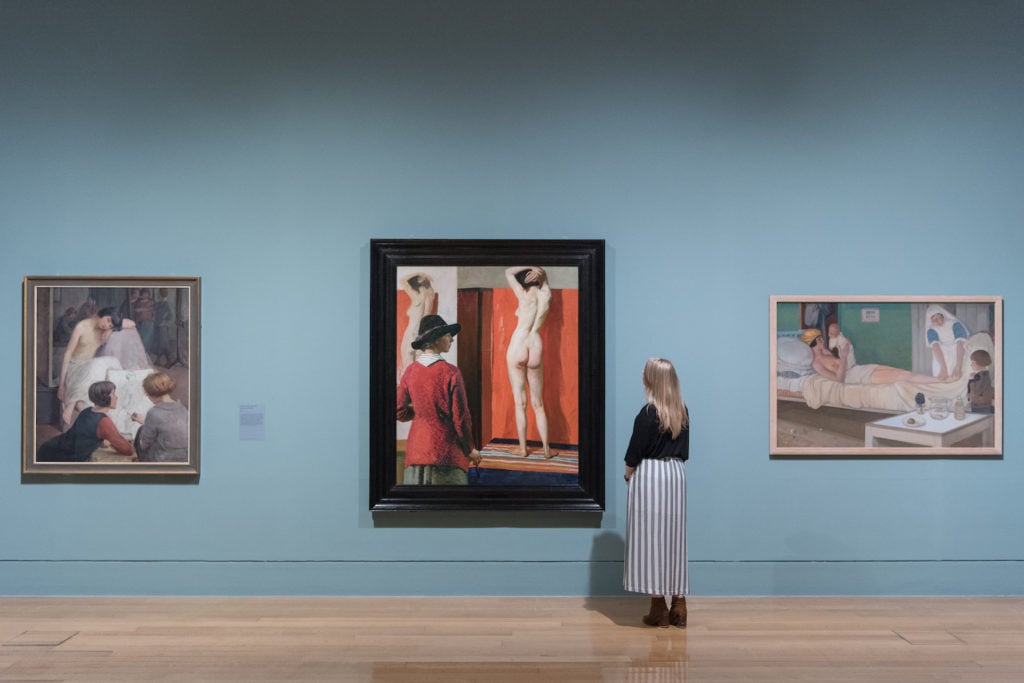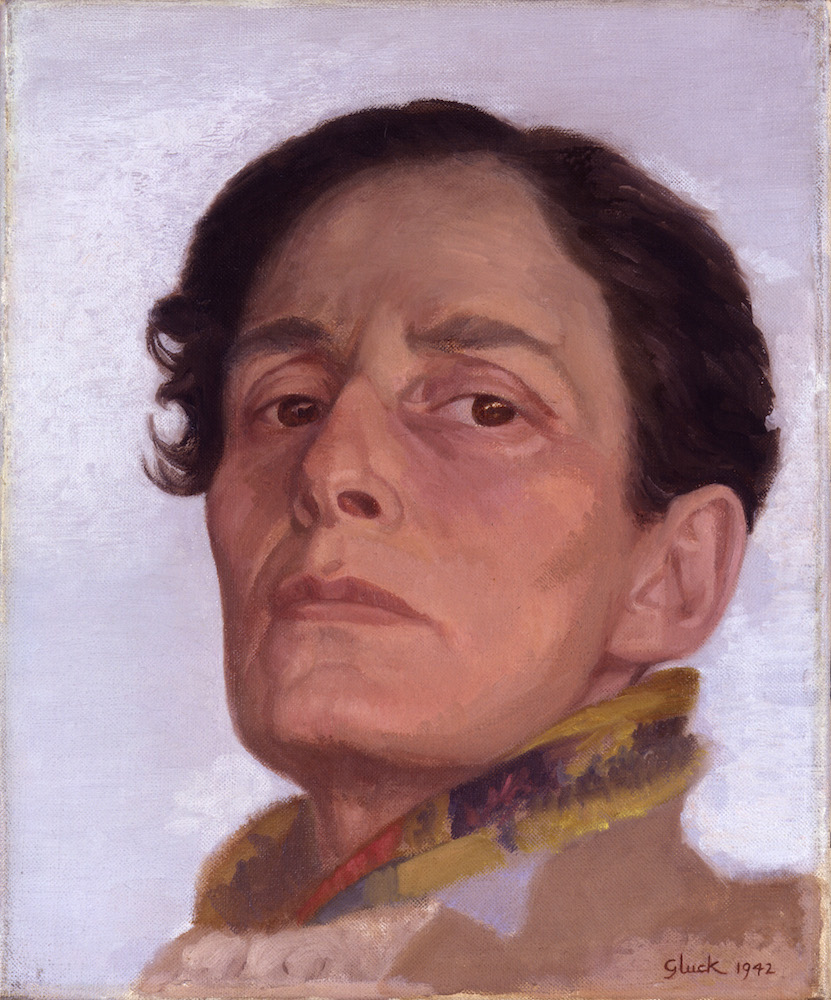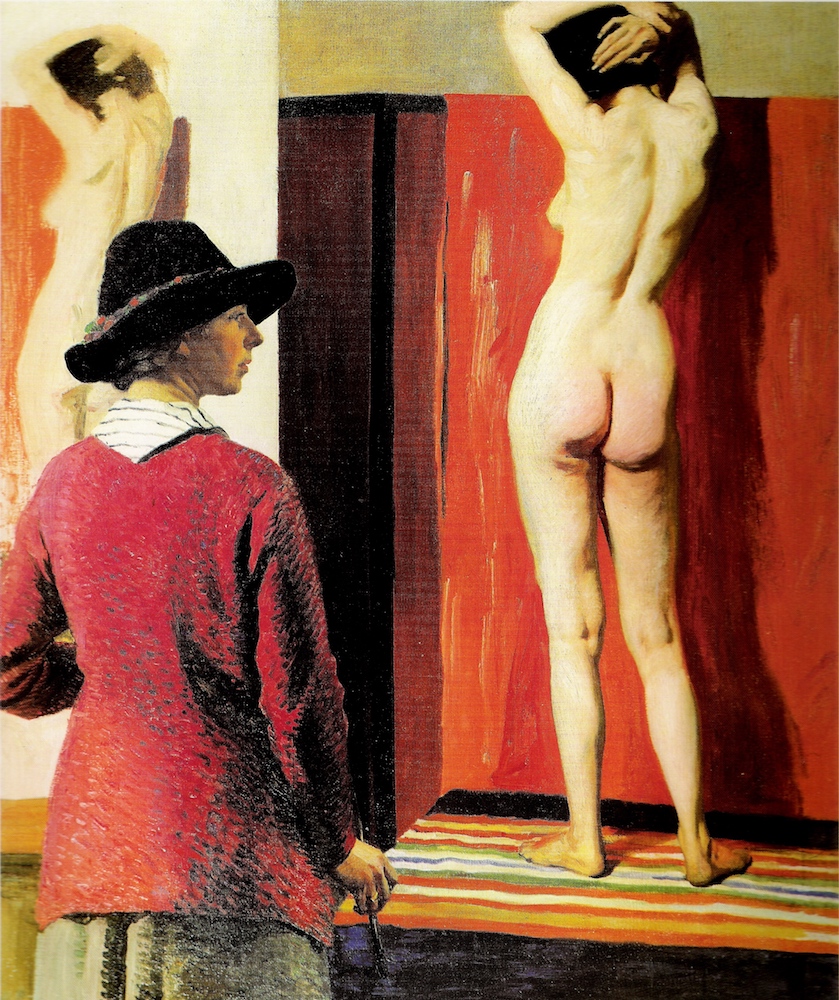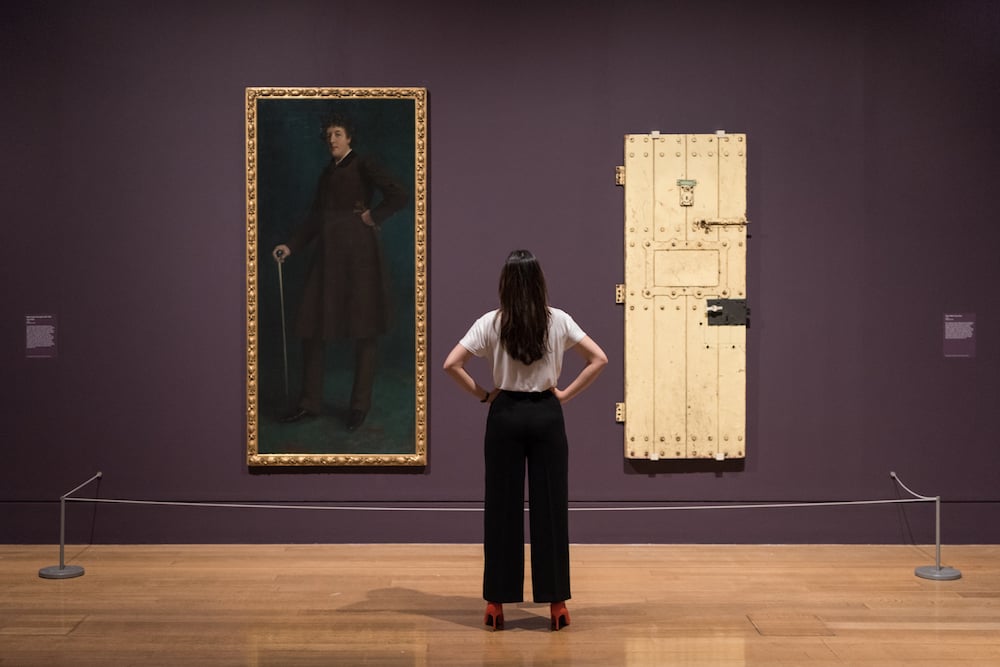Reviews
Tate Britain’s Landmark Show ‘Queer British Art’ Digs Deep Into Forgotten Histories
The survey coincides with a surge of interest in LGBTQ-related themes at art institutions.

The survey coincides with a surge of interest in LGBTQ-related themes at art institutions.

Hettie Judah

Queer? British? Art? We find ourselves at a curious moment when each of these tags is open to debate and redefinition. No doubt there will be wild ructions amongst our self-appointed language police at Tate’s liberal interpretation of all three in its new exhibition “Queer British Art: 1861–1967.”
“Queer” here performs for a host of perspectives, identities, and desires in an era in which there were few, if any, useful means available of naming them.
Testing the limits of “British” we find the German-born photographer Wilhelm von Gloeden, who passed his adult life largely in Sicily. Von Gloeden acquired a passionate following around the turn of the 19th century for his images of lightly clad and languid young men posed in the ruins and landscape of Taormina. Curator Clare Barlow makes a spirited argument for his inclusion in that the work “creates a community of viewers” in Britain, and his Greco-Roman vision of male allure certainly remained influential well into the 1960s.

Simeon Solomon, Sappho and Erinna in a Garden at Mytilene (1864). Photo courtesy Tate.
Assembled under the loose rubric of “Art” are included a copy of Man-ifique! physique magazine; a pink wig and tiara worn by music hall star Jimmy Slater (aka “The Perfect Lady”) in the 1920s and 30s; a good-sized metal box full of buttons cut from the jackets of seduced guardsmen by the artists Denis Wirth-Miller and Richard Chopping; as well as the door of Oscar Wilde’s jail cell. All objects that Barlow judges to “add texture to the narrative.”
It is in her interpretation of what might constitute “Queer Art” that Barlow has (perhaps necessarily) taken the most inclusive view. The show includes the explicitly homoerotic, such as Simeon Solomon’s yearning pen-and-ink drawing of The Bride, Bridegroom and Sad Love (1865), in which the bridegroom surreptitiously entwines fingers with a grieving male friend at crotch height as he raises his other arm to embrace his new wife. There are works, too, that are homoerotically explicit: memorably, Duncan Grant’s mutually-felating gymnasts.
Other inclusions are read as expressive of some queer sensibility in the light of their maker’s biography. Gluck’s Lilac and Guelder Rose (c.1932-7), an elegant and dynamic floral study in whites and pale greens, earns its place thanks to the artist’s then-relationship with the celebrated florist Constance Spry, who fostered in her lover a fascination with near monochrome arrangements.

Hannah Gluckstein, Gluck (1942). Photo ©National Portrait Gallery.
Other choices are more problematic, with the weight of interpretation balanced on enigmatic sensuality.
Evelyn De Morgan’s Aurora Triumphans (1877-8) shows Aurora, goddess of dawn, naked and woozy, shaking off the bonds of night as a dark-cloaked figure—here assumed to be female—departs. De Morgan’s repeated use of Jane Hale as a model, as well as their lifelong closeness, are certainly persuasive, but no details are known of their relationship.
Much as critics at the time did not see what they did not know to look for, so it is possible that in searching for evidence now we sometimes see more than there might, in truth, be there to discover.
For all the joy in Duncan Grant’s glorious sunlit bathers, or sass in the section devoted Britain’s mainstream heritage of drag, dames, and cross dressing, the exhibition is haunted by a lingering shadow of tragedy. The exhibition’s date span coincides at the one end with the abolishment of the death penalty for sodomy and at the other, the partial decriminalization of sex between men.
There is no shortage here of terrible stories of lives falling apart following arrest, prejudice, and prosecution—but anguish and torment are also established tropes in Romantic narratives of longing and heartache. These two faces of suffering—the one imposed and often life destroying, the other aestheticized and to a certain degree relished—are treated as indistinguishable, as if torment in and of itself was somehow the inevitable fruit of queer desire rather than simply of desire.

Laura Knight, Self portrait and Nude (1913). Photo courtesy National Portrait Gallery.
Three years in the making, “Queer British Art” took Barlow and her team down some of the art world’s less-travelled paths. Many of the works were found far outside the territory of either lovingly assembled catalogues raisonées or well-trodden inter-gallery loans.
“There’s been a lot of digging,” says Barlow. “I’ve been very lucky in that a lot of the collectors have been helpful: there have been very fortuitous discoveries.”
In pole position amongst these is a portrait of Oscar Wilde by the American artist Robert Goodloe Harper Pennington. Painted near life size, the portrait shows Wilde aged 29, shortly after his notorious lecture tour of America, and on the brink of wider fame. Having occupied pride of place above the Wildes’ family fireplace, the painting was auctioned alongside the contents of their house during the writer’s period of imprisonment for “gross indecency,” and subsequently passed around between his friends. The painting is now part of a Wilde collection held by a university library in California, and this is its first public exhibition in the UK.

Installation view of “Queer British Art” at Tate Britain. Photo Joe Humphrys, ©Tate Photography.
There is no question as to how important such detective work has been, in particular turning up material relating to lesbian and trans artists. Recent exhibitions at Tate and beyond have raised awareness of the work of Gluck, Claude Cahun, and to a lesser extent Marlow Moss, but they are hardly household names. To a degree this reflects these artists’ largely private artistic practice (in the case of Cahun), withdrawal from the world (in the case of Moss) or destruction of large bodies of work (in the case of Gluck). However both their gender at birth and later rejection of it in favor of manly dress or self-identification as “neutral” have played their part in keeping their legacy well buried.
Despite being bookended by the popular territory of the aesthetic movement at one end, and the pairing at Hockney/ Bacon at the other, much of the terra covered in Queer British Art has remained more or less incognita.
The show’s fluid use of terminology reflects its status as a partial telling of the story, rather than the last word. “So much of this history has been lost or destroyed,” says Barlow. “I really hope this show will encourage more material to come out of the woodwork.”
“Queer British Art 1861-1967” is on view at Tate Britain, from April 5 – October 1, 2017.